Reluctant learners. Who exactly are they? You may have one (or two) in your home or in your classroom. These are the children who turn their little noses up at our best and most creative attempts to teach them their letters, numbers, well…almost anything!
They typically think “out of the box” and are extremely bright. But they just won’t “fit” into our box. And sometimes it’s just down right frustrating! So what do you do with this child when it comes to learning the alphabet? After all, letters are vitally important to learning to read. Today, we’re going to explore some ideas for teaching the alphabet to reluctant learners. If you have more to share, I’d love to hear your thoughts in the comments!
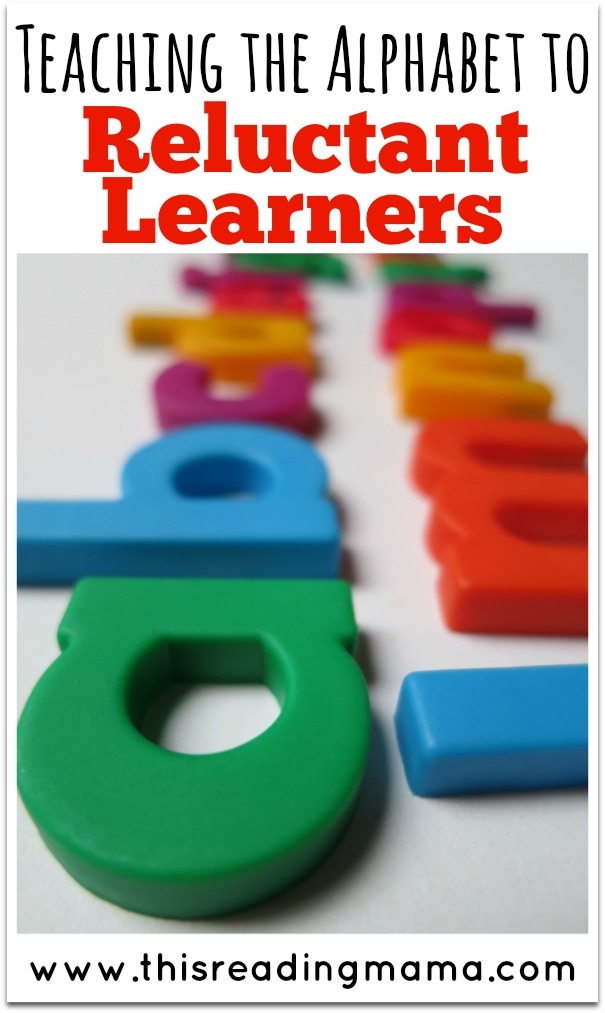 *This post contains affiliate links.
*This post contains affiliate links.
What are Reluctant Learners Capable of?
1. Anything! Just because she’s not interested in how you are presenting it or how its packaged doesn’t mean she has no potential to learn it.
2. Refusing to do anything that “smells” of schoolwork. If you have a reluctant learner, I don’t need to further explain this one. It speaks for itself.
3. Sensing your frustration. You bought the laminator and printer {not to mention all those ink cartridges}. You printed off those cute preschool printables and are prepared for some fun preschool time. You laminated, you cut them out, you organized them in alphabetical order. You are totally prepared to teach your child. You are so excited!
You ask your child to sit down and “do school”. And your preschooler refuses. Absolutely refuses. You want to cry. You want to bang your head against the wall. All that money. All that time. Breathe. Just breathe. It’s SO hard not to take this personally. Believe me, I know!! But when we {notice, I’m saying “we”} get all in a huff and fuss at our child, do you think she’s going to want to “do school” {or even try} again? My guess is probably not.
Quick Tips for Reluctant Learners
1. Wait. With all the pressure parents and educators put on kids reading, believe it or not, many kids just aren’t ready to learn letters or read at three years old. 🙂 Developmentally appropriate is the teacher term. We need to wait until our kids show us signs that they are ready before we push so hard that we exhaust them and ourselves. You can read more about what this means for preschooling at home in my guest post at 1+1+1=1.
2. Make it meaningful to the child. I believe this is vital for every age, but ESPECIALLY the young child. I’m big on multiple and meaningful exposure.
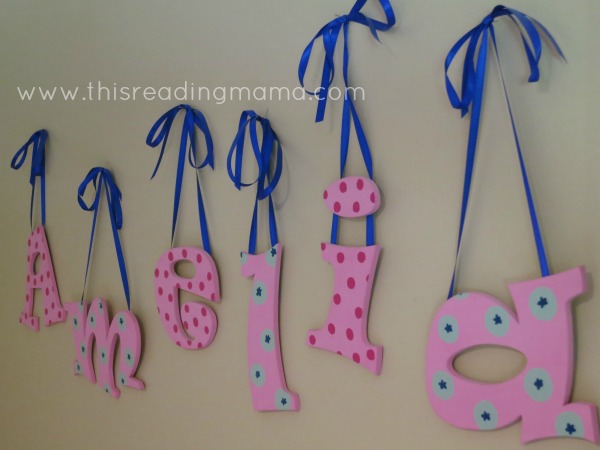
- Generally, a meaningful place to start with young children is their own name.I think it’s important for kids to see their name on the wall of their bedroom or on their sippy cups. You can make a quick photo book {notice I didn’t say it has to be a detailed scrapbook} about your child. Name it, A Book About _______ {child’s name}.
- Make a personalized ABC book, with pictures of things that matter to your child on each page. For example you might have A/airplane, B/ball, C/cat, or D/dad. And if your child is HUGE into dinosaurs, make him a dinosaur ABC book.
- Starting with the child’s interests is a big one. What does your child naturally gravitate towards? Be a student of your child. Write down a list of what she likes and doesn’t like {I love how Carisa of 1+1+1=1 did this for her preschooler} to get you started. Work off “your child’s list” instead of your own.
3. Play, play, play! Integrate toys that foster alphabet learner in your home. Do you have to sit down and make a big lesson over the toys? No. But they are there for the child to explore on her own.
Integrate letter play into their play. NSis loves playing with stamps {HIGHLY supervised, as to avoid stamps on everything in my house}. Just recently, I watched her play with them for a while. As she seemed to grow tired of stamping on the plain, white paper, I asked her if she’d like me to draw an N for her name on a new piece of paper. She said, “Yes.” So, I simply wrote a block capital N and said, “Can you put stamps all over that N?” She continued playing with stamps on the letter N. You can find more ideas for playing with letters, especially for active kids, in my post, 26 Ways to Learn the Alphabet: from A to Z.
That’s what I’ve done with Learning the Alphabet. Most of the activities included are playful in nature and you can adapt any of them to match your child’s interests. For example, NSis loves to roll with our Photo Stacking Blocks, so we combined two activities and made it more playful for her {you can see what we did on Instagram}. She loved it and asked to do this activity over and over and over again. Score! You can find all our FREE packs HERE or purchase all 26 letters plus bonus goodies for only $10.
4. Don’t ask question after question after question. Integrate learning naturally into conversation or play. This is a BIG one in my book. Sometimes reluctant learners are reluctant because it frustrates them. This also goes back to making sure you wait until your child is developmentally ready for the activity.
- When introducing letters, often times parents/teachers sound like this, “What letter is this?–What letter do you see?–Good, now what letter is this one?–And what sound does it make?” Question after question after question that your reluctant learner does not want to answer. Maybe she doesn’t know it. Maybe she’s just not interested.
- Instead, I suggest modeling and talking about the letters yourself first. The alphabet is a language. You are teaching your child the language of letters. No one learns a new language by being grilled with 500 questions. Talk about letters naturally through play, like I wrote about in my guest post on I Can Teach My Child.
- And there are many occasions {oh, so many times}, I believe we should just keep our mouths zipped. It is amazing what our kids can learn on their own as they explore the alphabet in THEIR way. We also need to affirm their unique style of learning as they share their findings instead of feeling like we need to add more to the lesson {so we can “count it” as schoolwork}.
5. Take letters wherever you go. No, not literally. Just keep alphabet learning in the forefront of your mind. When we took a beach trip this past summer, I played a little game with my youngest. I would write a letter in the sand and then say, “Don’t you erase my b!” {We did this in a very playful way with several letters. She knew I was totally joking and wanted her to erase the letter.} We do this often at home with our MagnaDoodle, sidewalk chalk {she sprinkles the word with water}, or in the sandbox in our backyard. We sing about letters on our swing or talk about them when we go to the grocery store. Letters are everywhere!
6. Pull out something that’s typically “forbidden”. In our home Post-It Notes, Do-a-Dot paint, and markers {even watercolor markers} stay out of reach. Maybe I’m just a mean mom, but I’ve been burned more than once by my extremely curious tots and preschoolers.
But occasionally, I’ll pull them out for a letter learning activity, like I did with our Write and Stick a Sound Game. Even reluctant learners may have a piqued interest in the activity because you’re using something that’s usually off limits to them.
Words of Encouragement for Reluctant Learners
- Be a student of your child. Learn from her.
- Love her for who she is. Comparing her to other “easier” kids is dangerous territory.
- Discover her letter learning language and use it to speak to her heart.
- All easier said than done, I know. 🙂
More Resources from This Reading Mama
Follow This Reading Mama’s board ABC Goodies on Pinterest.
This is part of a 31 Days of ABCs, hosted by All Done Monkey. To see all of the posts in this series, on the image below.
~Becky
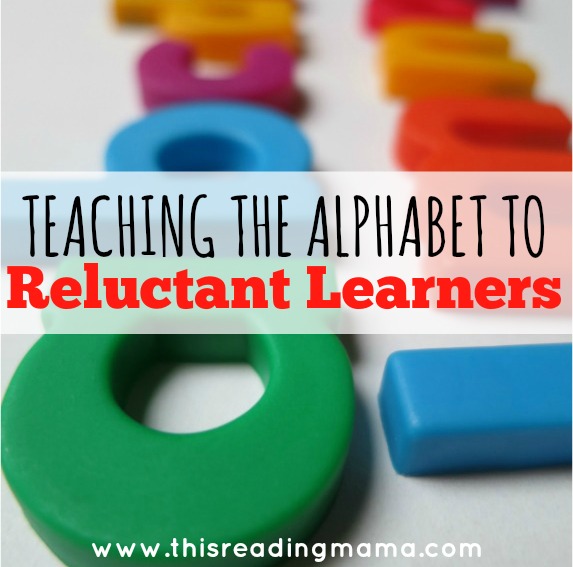
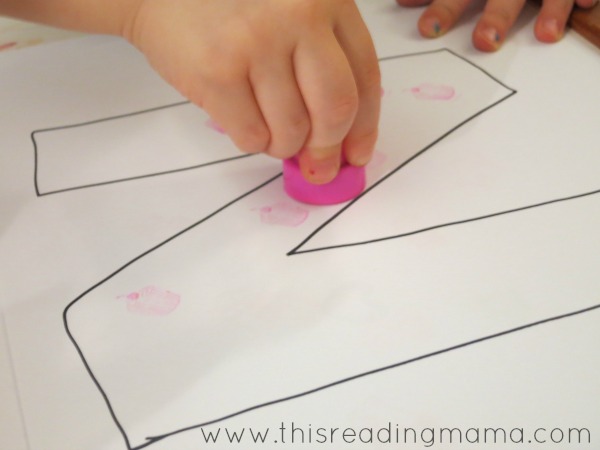
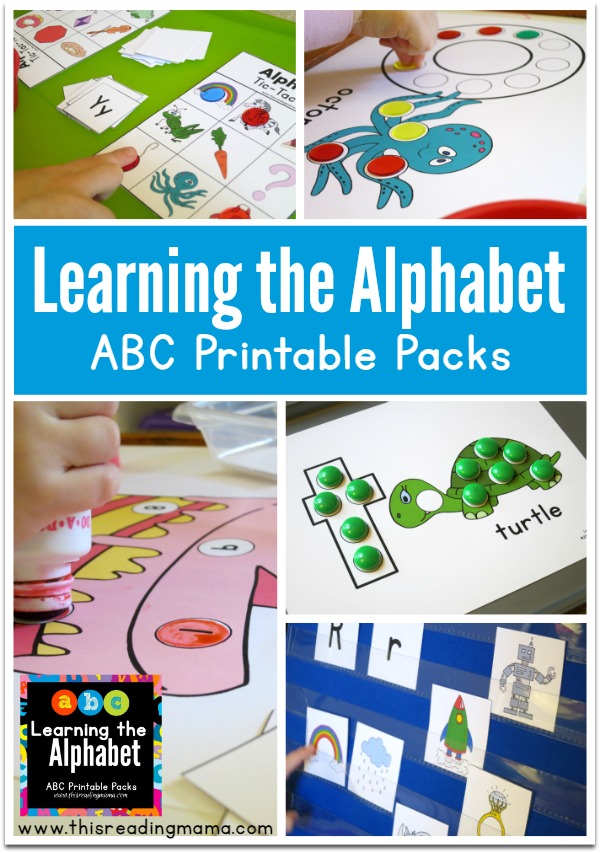
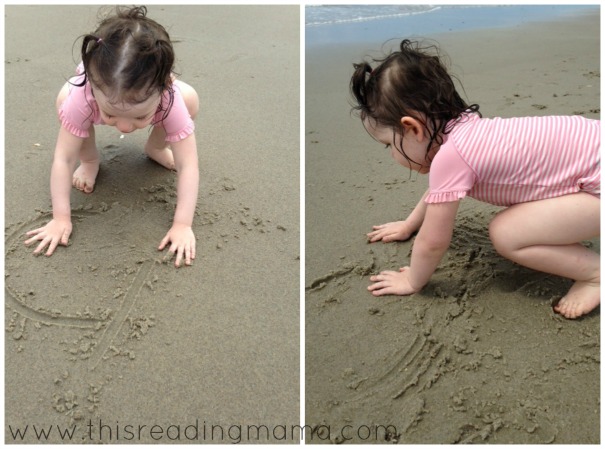
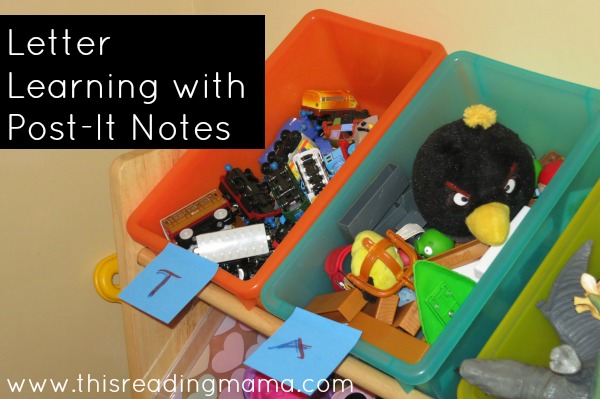
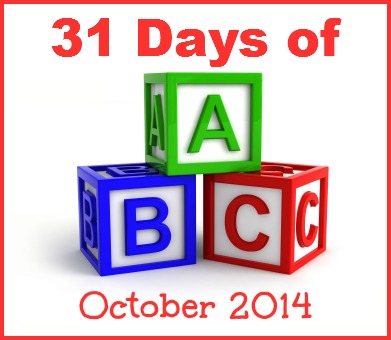
What a wonderful post! I love the idea of not grilling them or putting them on the spot, but keeping it fun and waiting until they are ready.
I love these ideas. My reluctant learner learned his letters in the bath from foam bath letters.
Fantastic advice!!!
Thank you, Jodie!
What a great post! I’m always looking for fun and exciting ways to teach my daughter and keep her interested! Sometimes the simplest of ideas get over looked, such as making about what the kids love and enjoy! 🙂 I was wrecking my brain trying to think of fun ideas and never thought to stop and ask, “What does Scarlett enjoy?” lol
Thank you so much for this post! My friend shared it with me on pinterest today. I have a five year old reluctant learner and get so frustrated. You have given me some new ways to help her learn in a way that makes sense for her!
Yay! I’m so glad it helped you.
Thank you so much for the advice you give to be willing to wait until your child is ready to learn. I can definitely see how it could be frustrating to feel like your child isn’t learning as fast as their peers, but it makes sense to me that some children would learn quicker than others. knowing what pace is appropriate and what really is to slow could be hard, but there are probably professionals out there who can help you figure it out.